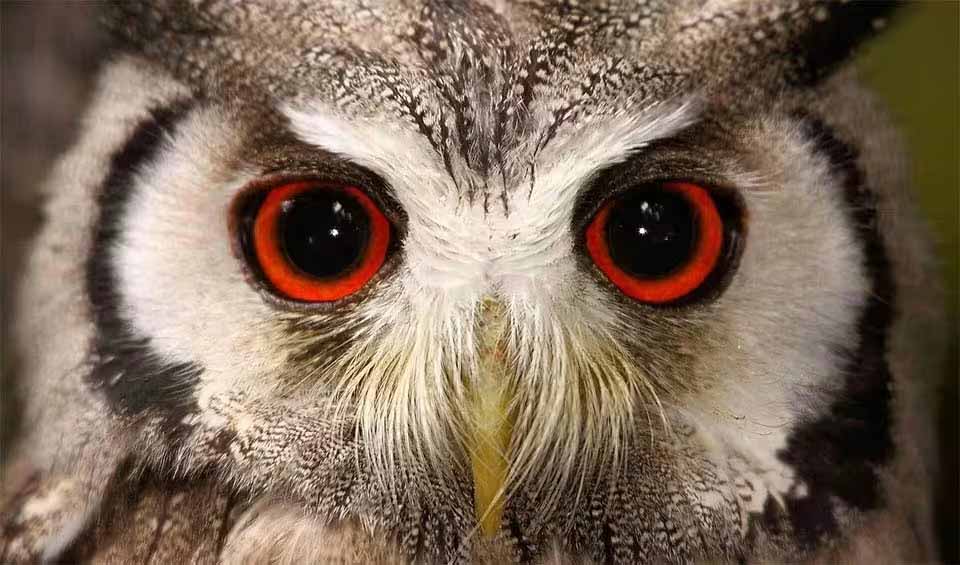The northern white-faced owl is a captivating nocturnal bird of prey that inhabits the vast savannas and woodlands of Africa, carving out its niche between the expansive Sahara Desert and the equatorial regions. This elusive owl, known for its remarkable adaptation to its environment, spends its days concealed amidst the thorny branches of its favorite trees, where its black, white, and intricately patterned feathers blend seamlessly with the bark, providing it with unparalleled camouflage and protection from potential predators.
Despite its small size, the northern white-faced owl possesses a formidable array of defensive strategies to evade threats from larger raptors and predators. When confronted by a significantly larger adversary, such as a competing raptor, this cunning owl adopts a strategy of concealment, flattening its body against the branches and narrowing its piercing orange eyes to barely visible slits, effectively disappearing into the intricate patterns of the tree bark. This remarkable ability to blend into its surroundings allows the owl to evade detection and avoid potential conflict, ensuring its survival in the harsh African wilderness.
However, when faced with a threat of similar size or stature, the northern white-faced owl is not one to back down easily. In such situations, this resourceful bird relies on a combination of intimidation tactics and bluffing behaviors to assert its dominance and deter potential aggressors. By spreading its wings wide and puffing up its body feathers to appear larger and more imposing, the owl sends a clear message of strength and defiance, warning would-be adversaries to think twice before engaging in a confrontation.
Distribution
 Benin
Benin Burkina Faso
Burkina Faso Cameroon
Cameroon Central Af. Rep.
Central Af. Rep. Chad
Chad Côte D’ivoire
Côte D’ivoire DR Congo (Kinshasa)
DR Congo (Kinshasa) Djibouti
Djibouti Eritrea
Eritrea Ethiopia
Ethiopia Gambia
Gambia Ghana
Ghana Guinea-Bissau
Guinea-Bissau Guinea
Guinea Kenya
Kenya Liberia
Liberia Mali
Mali Mauritania
Mauritania Niger
Niger Nigeria
Nigeria Senegal
Senegal Sierra Leone
Sierra Leone Somalia
Somalia South Sudan
South Sudan Sudan
Sudan Togo
Togo Uganda
UgandaAnything we've missed?
Help us improve this page by suggesting edits. Glory never dies!
Suggest an editGet to know me
Terrestrial / Aquatic
Altricial / Precocial
Polygamous / Monogamous
Dimorphic (size) / Monomorphic
Active: Diurnal / Nocturnal
Social behavior: Solitary / Pack / Herd
Diet: Carnivore / Herbivore / Omnivore / Piscivorous / Insectivore
Migratory: Yes / No
Domesticated: Yes / No
Dangerous: Yes / No




